Below, we’re exploring masking tape and the many uses it has in the painting and decorating world. If you’ve never used masking tape, we have professional knowledge and tips and tricks for you to make the most out of a roll of tape.
We also have the best masking task available in the UK right now for your next painting project. Whether you’re painting your home, or doing some DIY, having a roll of masking tape in your toolbox can help in loads of ways.
Masking tape is a pressure-sensitive tape made from paper. It is very easy to tear and cut, and remove from surfaces. Masking tape comes in various widths and is also available in different adhesive strengths; more on that in a moment.
Masking tape can also be rated by how many days it can be left on a surface without leaving a residue.

This is really important. If you leave masking tape on a surface for longer than stated, it can leave the glue behind, which is tricky to remove.
When heavy pressure is applied to masking tape, it creates a strong bond on the surface. This can come in handy for a lot of DIY use, but for most painting applications, applying it with a soft touch to mark the area with the tape is all that’s needed.
We mentioned that masking tape is available in different adhesive strengths, and low tack masking tape is low on this scale.
Masking tape is rated between 1-100 depending on the adhesive strength. Low tack masking tape is perfect for delicate situations.
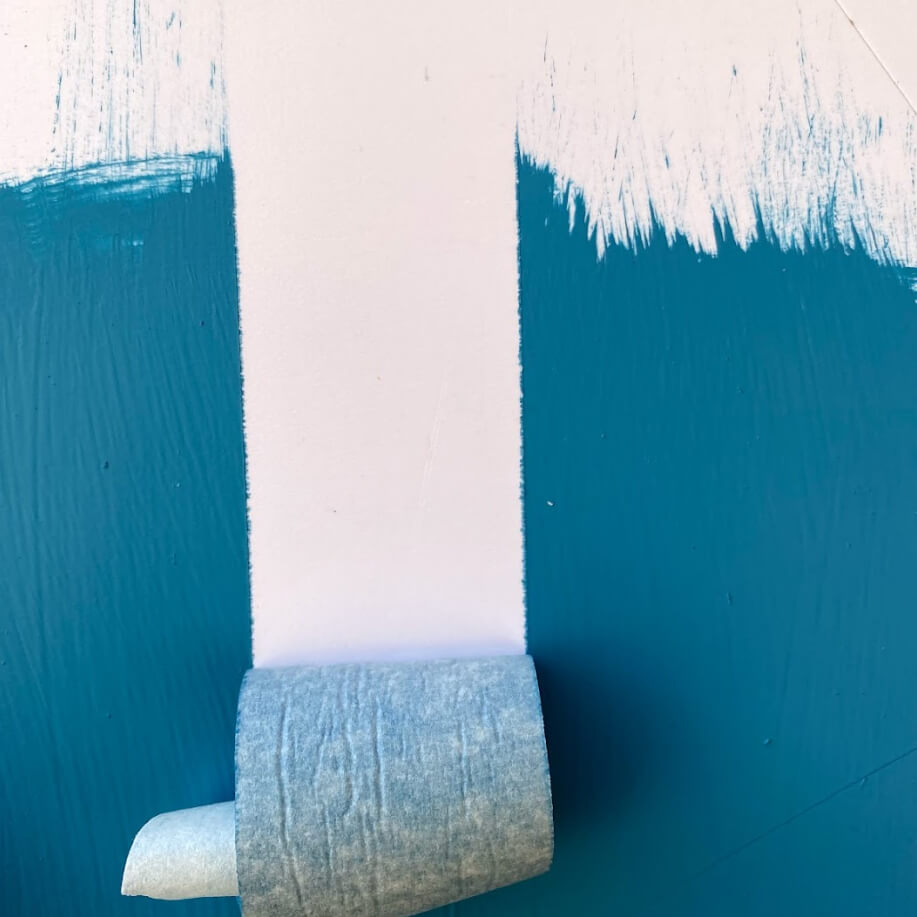
For example, if you’ve recently painted a wall and need to apply masking tape, higher strength stuff can remove the paint if you aren’t careful. So you can use low tack masking tape that will peel off easily after you’re finished.
Blue masking tape was actually developed for the painting industry. It is low tack, so it doesn’t harm any painted surfaces to which it is applied.
The bright blue colour is simply designed to help you locate the tape after you have finished painting. With one of the most common paints used around the home being white, locating white painter’s tape can be quite challenging.
You will find that most low tack masking tapes are a bright colour. Scotch, Frog Tape and 3M, for example, have blue, purple and green tapes available designed for painting delicate surfaces.
Ideally, you should use tape that contrasts the paintwork as much as possible.
That way, you’ll always be able to find the tape and remove it without damaging the paint.
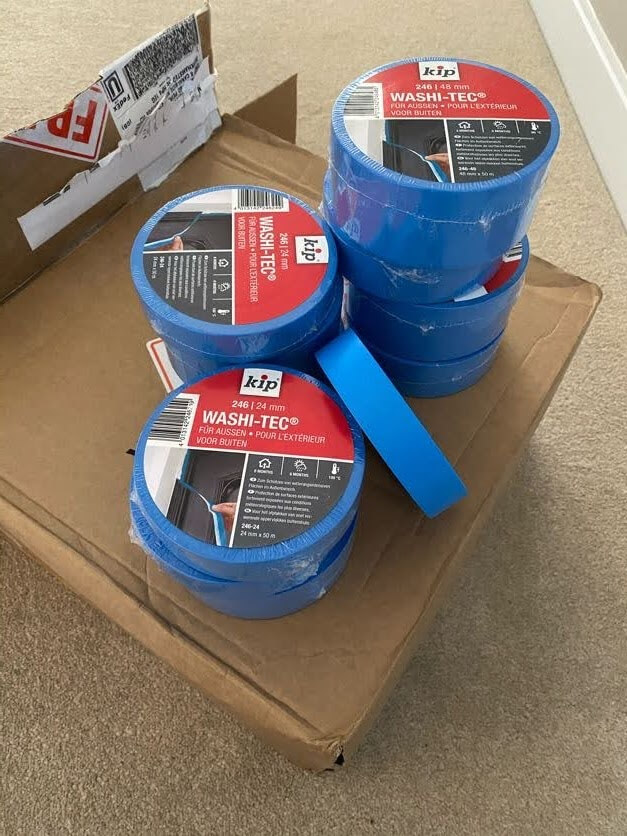
Masking off areas that you don’t want to paint is certainly one of the most common uses for masking tape.
We use masking tape when we renovate and decorate wooden windows to mask off areas of the home, for example.
You can use this tape to tape off skirting and the ceiling to protect while painting the walls in your home.
You can also use masking to attach dustsheets to the floor. It works wonders for this and won’t leave any residue when you’re finished.
The uses of masking tape in the DIY world are really endless.
We use it for marking paint cans, toolboxes, and even our lunches when we are on-site!
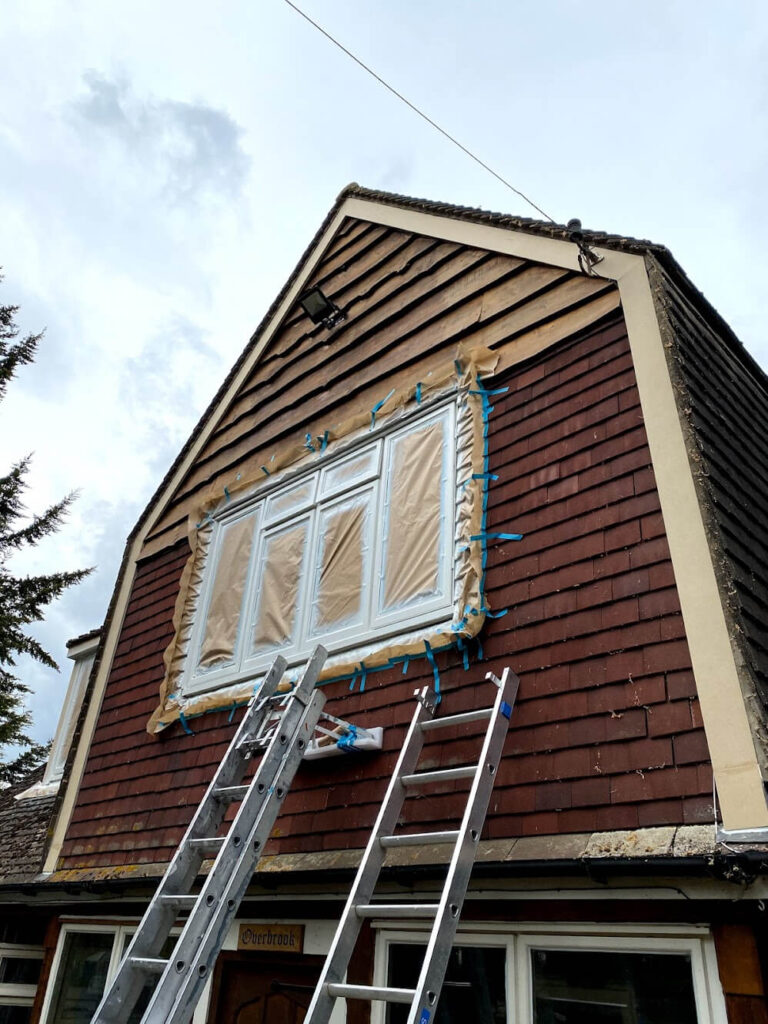
You can use this tape to temporarily secure two pieces of wood together to cut them, mask off areas to protect them from wood glue, or bond a piece of wood to a bench in order to plane or sand it.
To do this, add masking tape to both surfaces and press them down securely. Then, add a layer of super glue between the pieces of masking tape and press the piece of wood onto the bench.
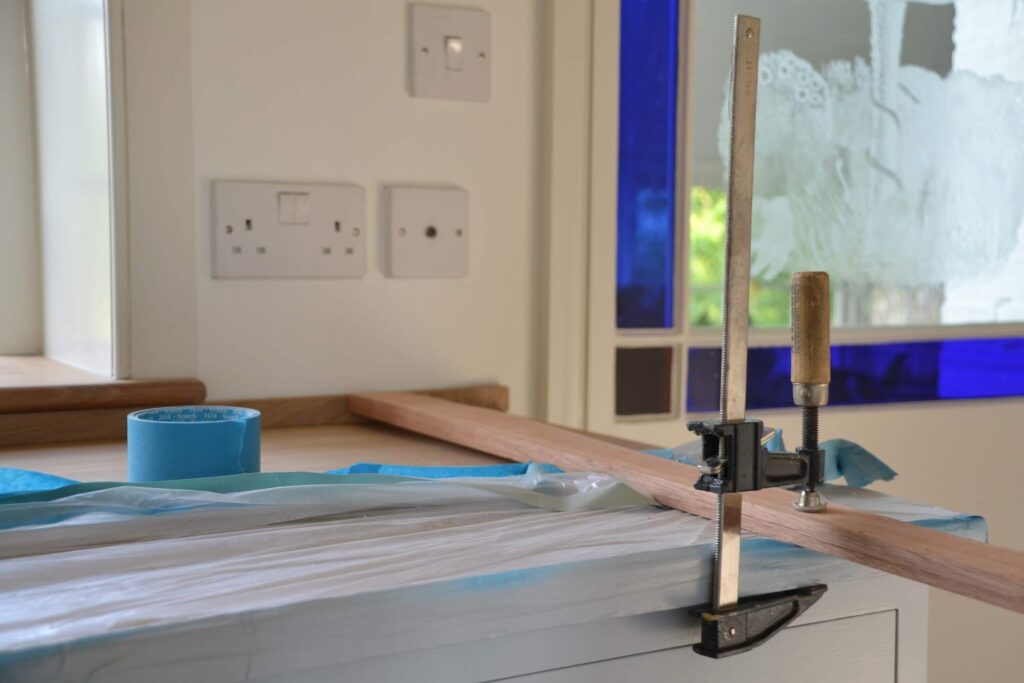
The superglue will hold the piece very securely while you sand it, but when you want to remove it, you can simply peel up the masking tape and remove it from both sides.
This little trick, along with hundreds of more masking tape tips and tricks, can serve you well during your DIY and painting projects.
The first step to applying masking tape is to ensure the surface you are applying it to is clean (in some occasions you can use white spirit or methylated spirit to clean the surface).
You can use a clean paintbrush for this to remove any dust. If there is dust on the surface, the tape will stick to the dust and not the surface itself, so it will peel very easily.

Next, start in a corner, and rip the end of the tape at an angle; this will help you get into the very corner of the room much easier. Then, move along the surface you are taping slowly, pressing the tape down as you go. If you are taping off a skirting board, for example, you can push the roll of tape against the wall.
This will help you line up the masking tape with the edge of the skirting much easier.
Once you’ve finished applying the masking tape, you can go back with a putty knife and use it to press the tape down. This will sort out any alignment issues and ensure that paint can’t get under the tape.

When you reach a corner that you need to mask, pull off more tape than your need from the roll. Then, using the putty knife again, place it into the corner and tear the tape off of the roll. This will create a seamless gap in the corner.

You can repeat these steps around all skirting, door trims, window frames and ceilings. If you’ve never masked anything off before, just take your time and go slowly. Masking off areas that don’t require paint correctly will save you loads of time with retouching later.
There are many opinions on when to remove the masking tape from painted areas.
However, we’d recommend removing it once the paint is dry to the touch.
This is about an hour after painting. If this isn’t possible, we’d say try and remove it within 24 hours. There are some masking tapes available that can be left on a surface for up to 60 days.
However, many masking tapes sadly don’t provide this information. So, it is best to remove masking tape as quickly as possible but wait for the paint to be dry to the touch first.

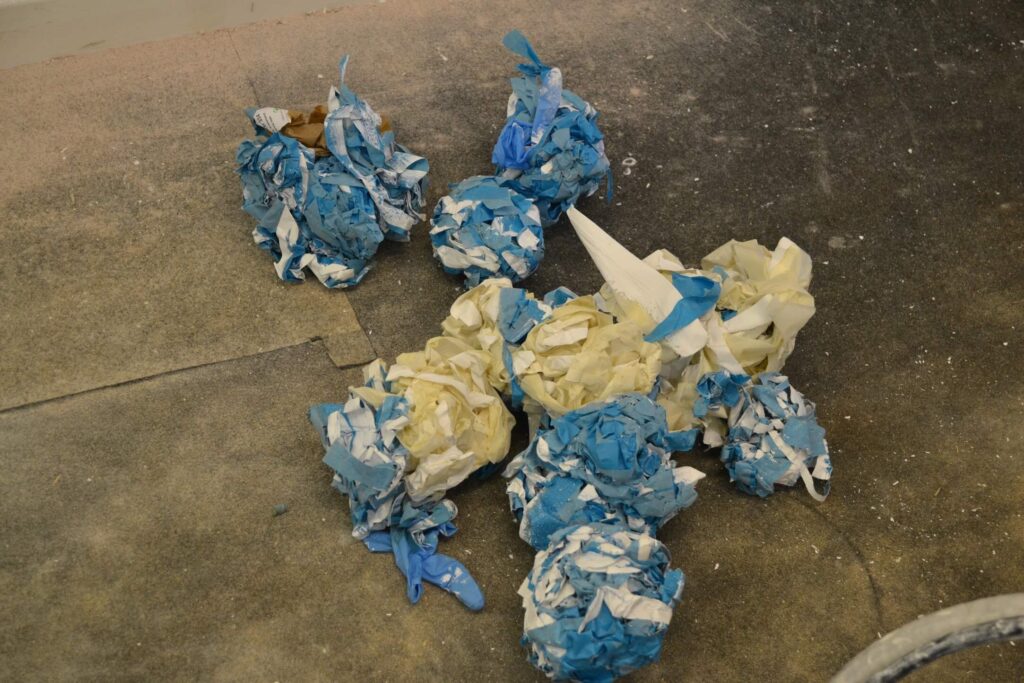
There are several different features to look for when buying masking tape, including:
Generally, masking tape is available in 36mm, 38mm, and 44mm, but there is also thinner width available for specialised tasks. This is mainly used in the car painting industry but can have applications in certain DIY settings. If you are adding painted patterns to a wall, for example.
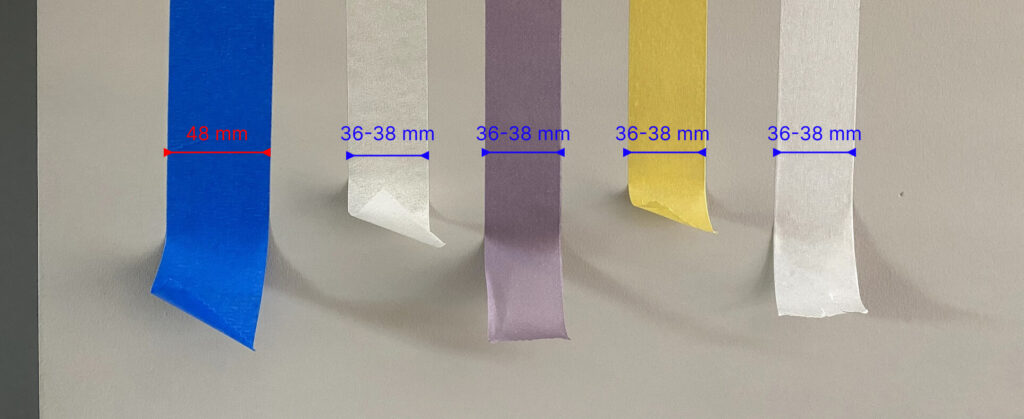
The surface of the masking tape can be coloured to help you identify where the taped areas are. The surface of this tape can also be highly textured. This is to ensure that any paint that gets on the tape is soaked up and not spread over other surfaces when removed.
Different adhesives are used on masking tape, and each one has a different level of adhesion. For painting, it is best to choose a low tack masking tape which can be several of the glues used in masking tape.
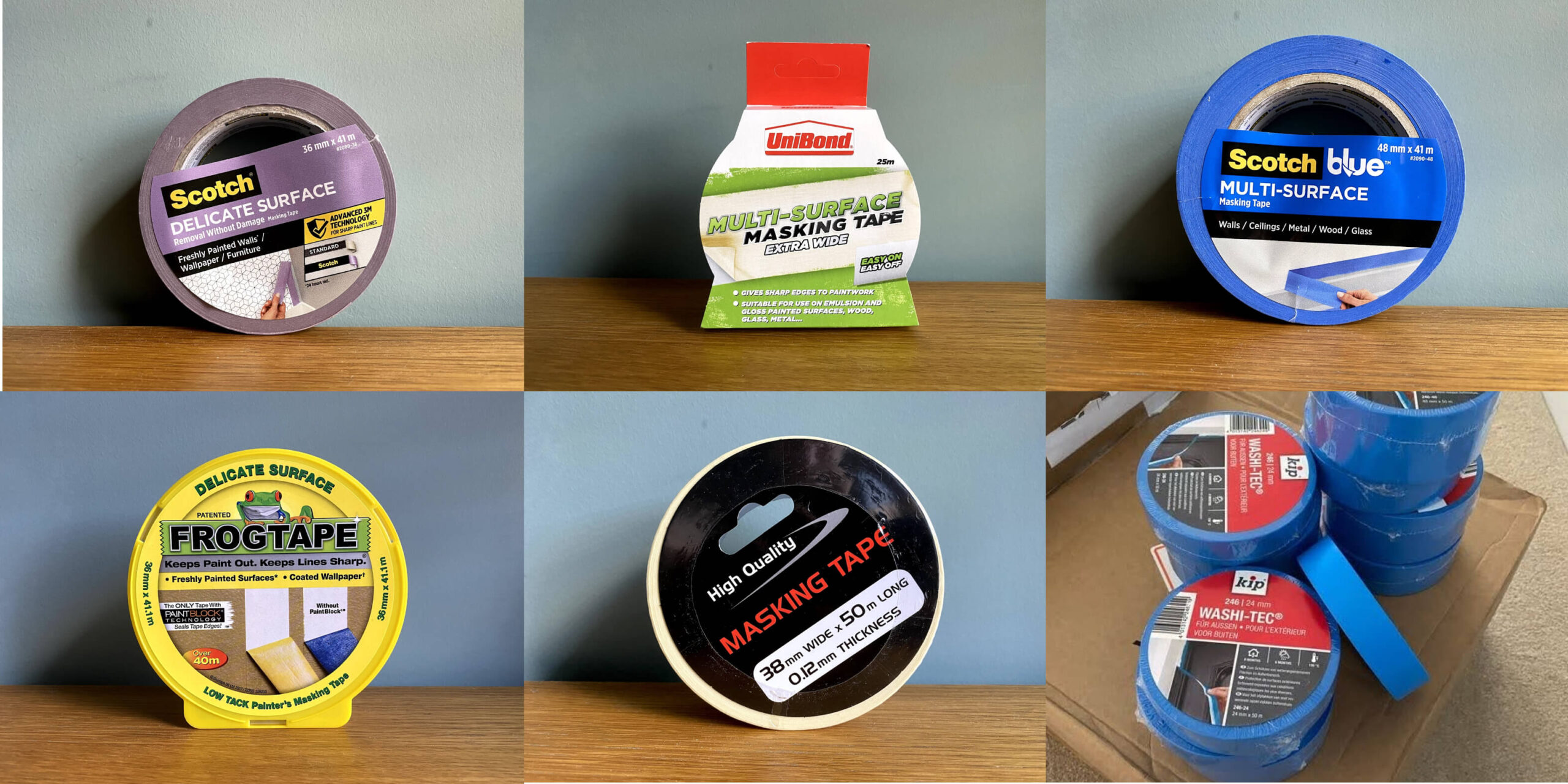
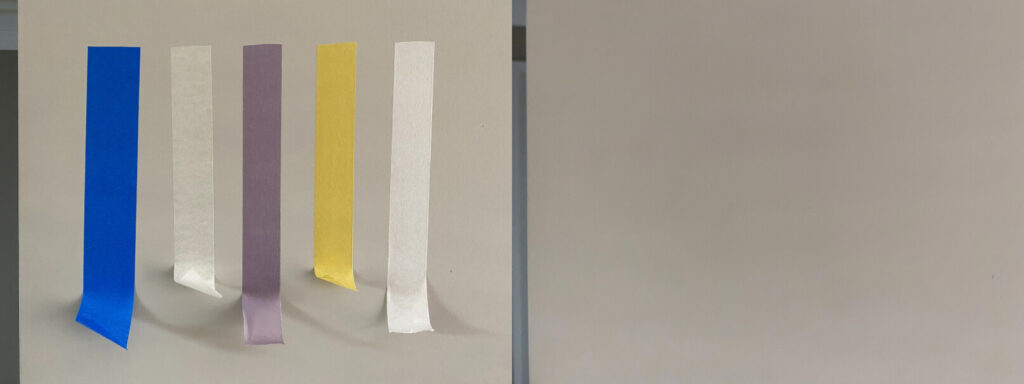
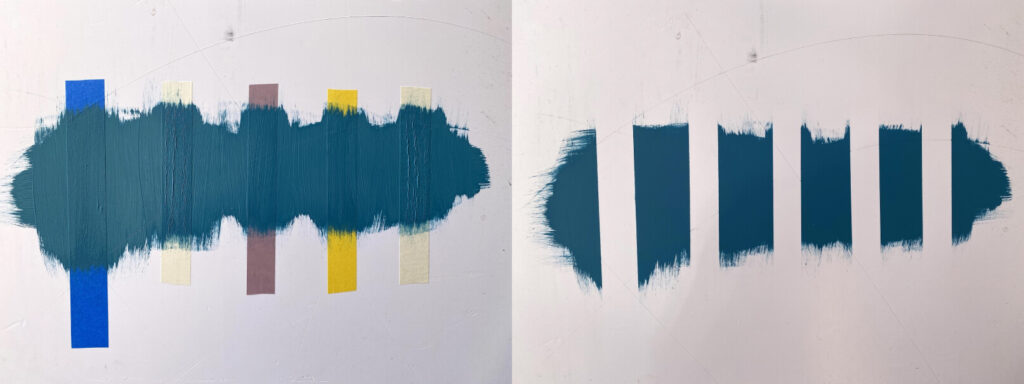
This is a multi-surface masking tape, and it comes in three different sizes. We’ve chosen the 48mm one for our list because we believe it is the most versatile. It has a medium adhesion strength and can be removed cleanly up to 14 days after application.
It is also UV resistant, so this tape can be used indoors and outdoors. We love how easy this masking tape is to tear as you are masking, and the crepe paper makes it absorb paint and stop it from spreading nicely.
As this is a multi-surface tape, it is great for textured surfaces, like ceilings, so it is well worth having a roll of this stuff when decorating your home.
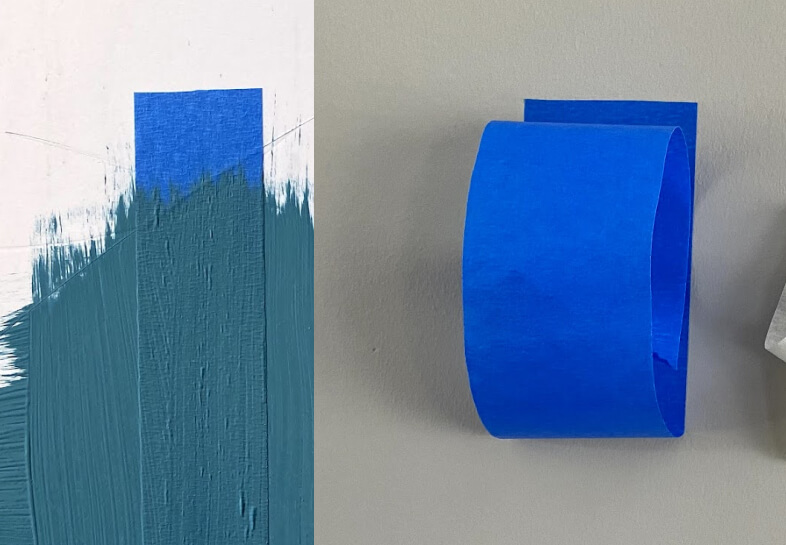

This is a low-tact 38mm masking tape that is designed for delicate surfaces.
So, you can use it on painted surfaces, but also around switches, door frames and a great deal more.
It has very good resistance to bleed through and is resistant to UV, but it isn’t suitable for outdoor applications.
For the quality of this tape, it is very well priced, so if you are painting your entire home, it is well worth buying a few rolls of this tape.
While this was designed for paint, this tape can also be used on varnished surfaces as well, so it is nice and versatile.
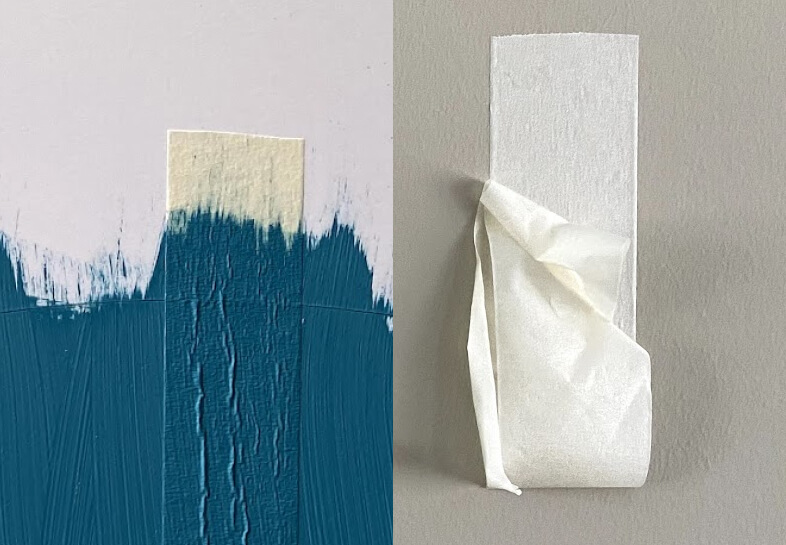
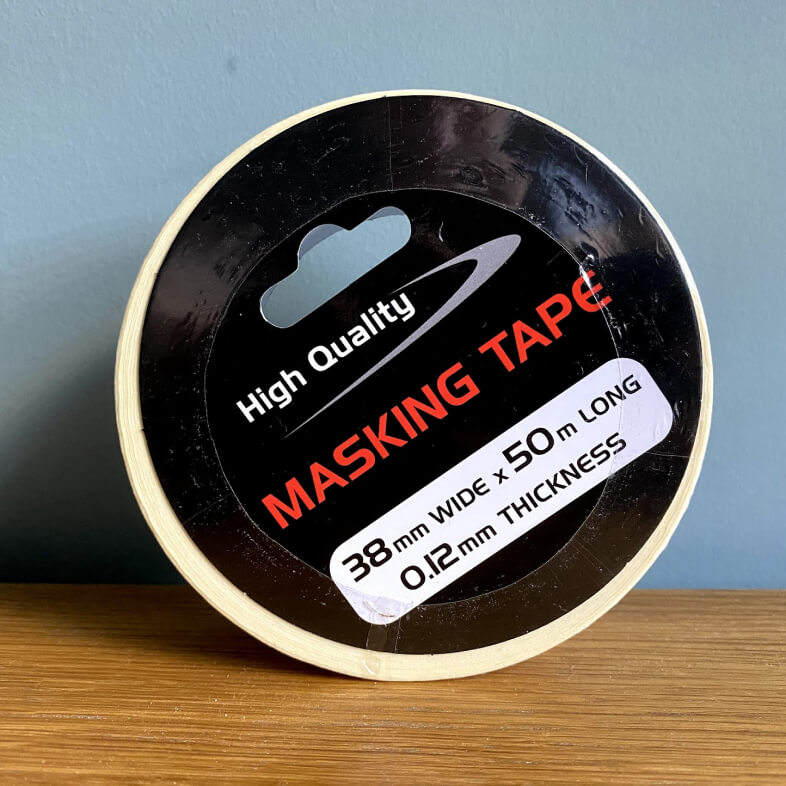
ProDec designed this tape with delicate surfaces in mind.
So, if you want to touch up an already painted wall or have some varnish you want to protect, this is a great choice. This tape can be used on bare wood, varnished wood, glass and more. It is ideal for stencil work or double toning a wall.
While this masking tape is low-tact, it must be removed within 24 hours of application.
So, if you know you’ll need masking tape on longer than this, perhaps choose another tape from this list. However, for quick painting jobs, this tape is really hard to beat.
This masking tape has Paint Block technology built-in, so it is perfectly designed to block paint right at the edge of the tape.
This offers a very clean paint line when you’re finished.
Plus, it is also low-tact; you can even use this tape 24 hours after you have painted a surface on the very same surface.
This is a very high-quality masking tape for use on delicate surfaces when precision is vital. If the final finish is extremely important to you, this is the tape to use.
Again, though, it should be removed soon after painting, so don’t hang around!
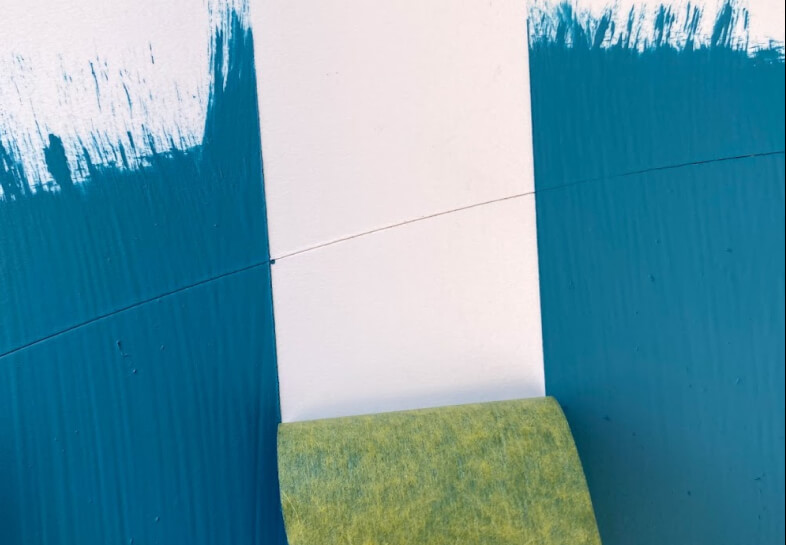

What we do not like about this masking tape is packaging, too much plastic and waste as each tape has it own individual plastic case.
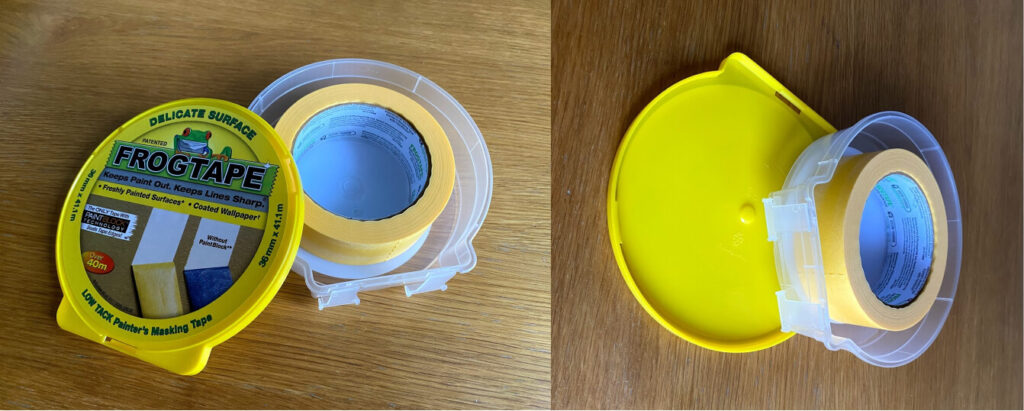
If your home currently has different paints on the walls that you need to mask off, this tape is perfect for you.
This can be used on gloss, emulsion, varnished and bare wood, glass, metal and more.
It gives a very sharp edge to all painted surfaces and can stay on the surface for up to 3 days after application, although, UniBond does state that it should be removed when the paint becomes touch-dry.
This is one of the cheapest tapes on this list, but it is extremely high quality for the price and well worth keeping in your decorating toolkit.
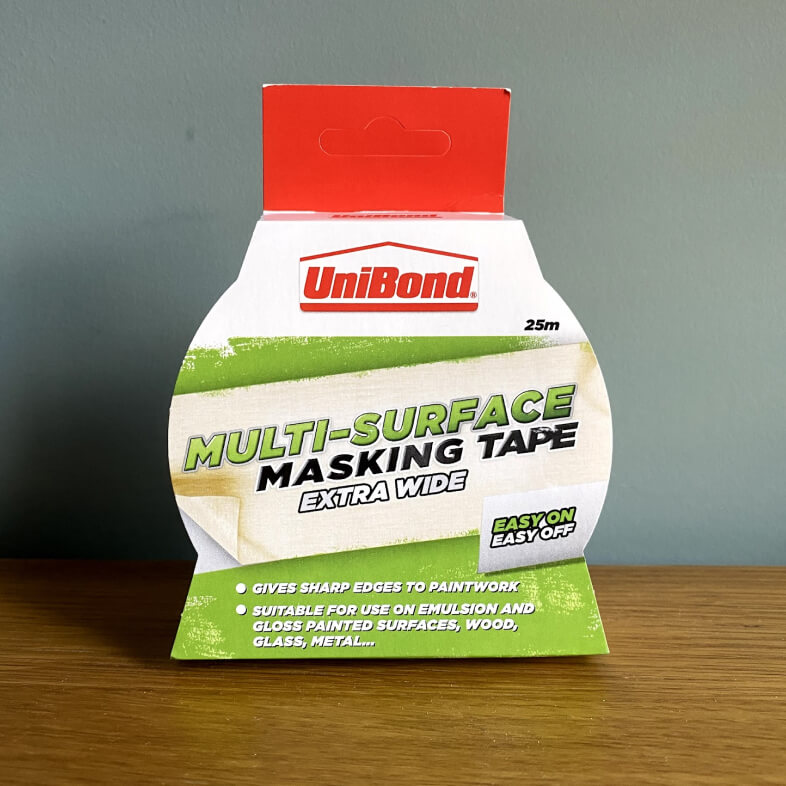
If you’ve just painted a surface and need to mask it off again, this is the tape for you.
This masking tape is incredibly delicate, but it can stay on a surface for up to 60 days after it is applied. It is a low-tact masking tape that offers very clean lines on your paintwork.
If you are doing any painting that involves patterns and reapplying masking tape to freshly painted walls, for example, you should use this masking tape.
It is very gentle yet has a very robust bond to the surface and leaves a very clean line behind as well.
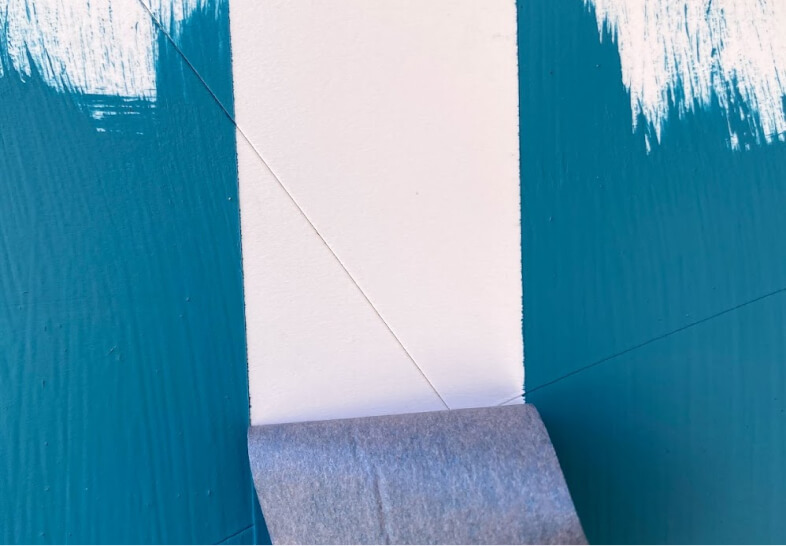
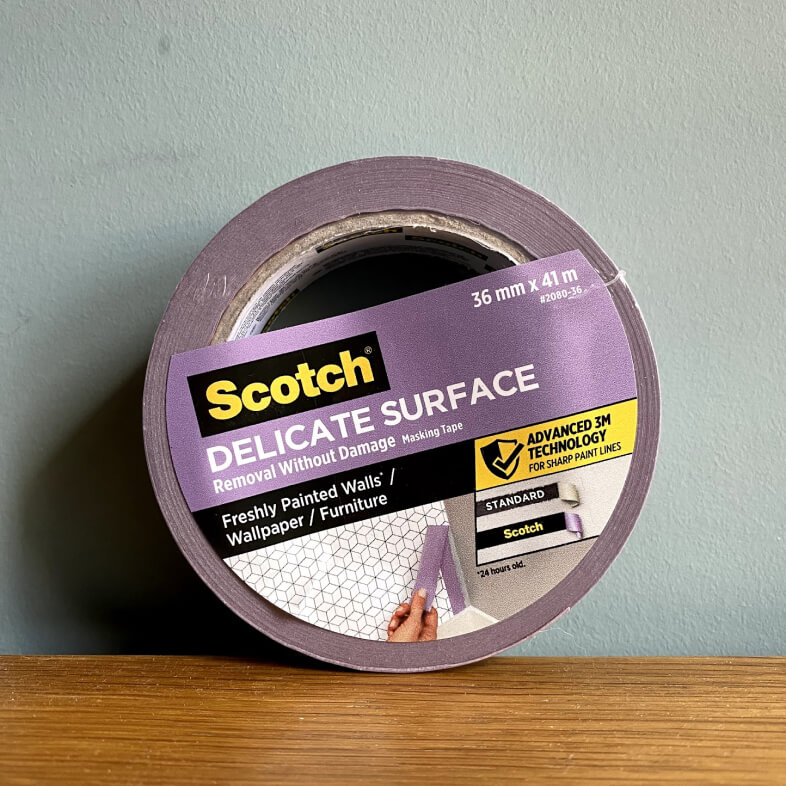
When you have larger areas to mask off, a masking tape applicator can come in really handy.
For most masking tasks, like masking skirting boards, for example, you can simply use the roll, and it does a great job.
However, if you want to block large areas of a wall, for example, you can use a masking tape applicator. This applies masking tape and masking paper at once.
So, you can block larger areas really quickly. We use these all the time when protecting our customer’s homes from masonry paint overspray.
If you plan on using a spray gun for your painting, a masking tape applicator is well worth investing in.
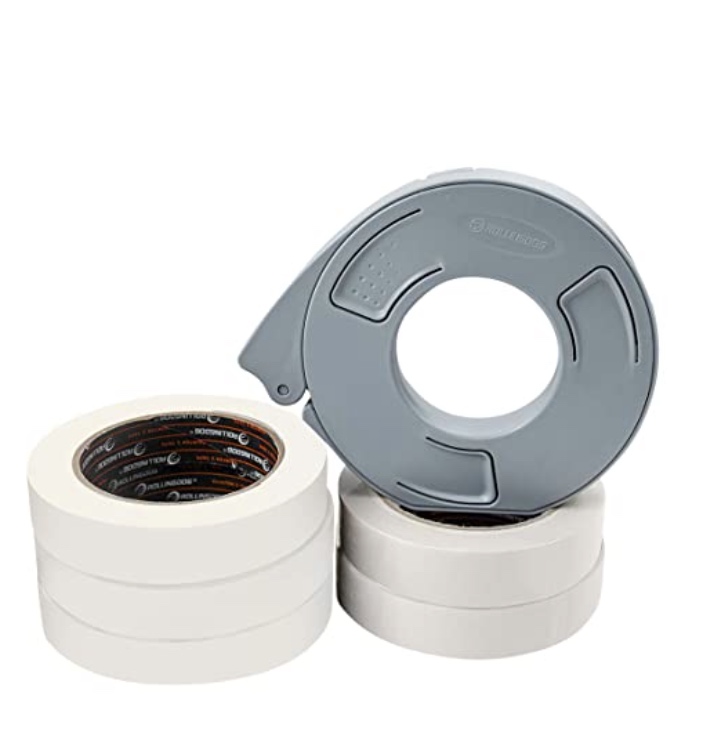
Some paint and masking tape manufacturers say that you should remove masking tape when the paint is wet. However, we’d recommend waiting until the paint is touch dry. This ensures that the paint has a good bond to the wall and won’t peel off of the wall when you remove the tape. It also stops any drips from the paint on areas you have masked off to protect.
A lot of masking tape is made from recycled materials, and some do market themselves as recyclable.
However, once the tape gets paint all over it, most recycling centres won’t accept it. So, if the masking tape is clean, it may be able to be recycled, but once used, it probably won’t be.
If there is residue from masking tape on your window, there are speciality solvents you can buy to remove it. However, a few drops of washing up liquid mixed with some vinegar also works great at removing it. Just use a sponge with circular motions, and the tape residue should be gone very quickly.
A lot of masking tape glue responds well to heat. So you can use a hairdryer or heat gun to remove the tape, but if there is tape residue left over, you can damage the paintwork with this method. Again, the dish soap and vinegar method from above is the best choice. It is gentle on the paint but removes the tape residue very quickly.
We hope this look at the best masking tape in the UK has been helpful. For more painter’s tips and tricks, as well as the best painting and decorating products available, please explore our blog further.